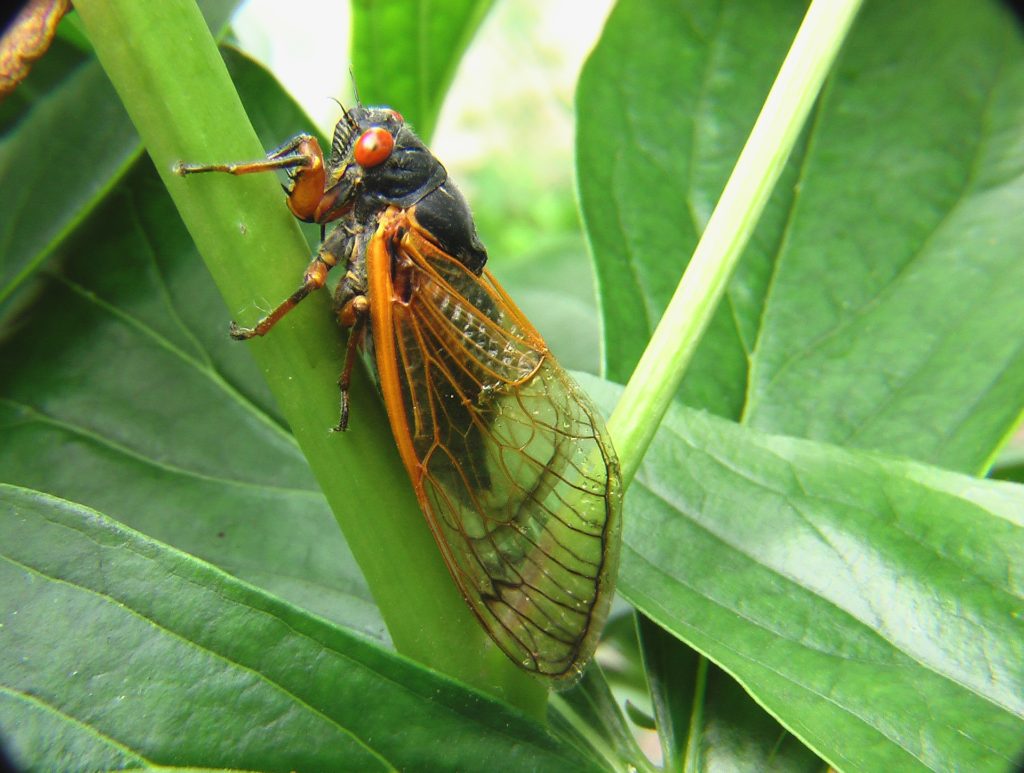In 2021 in many areas of North America, we’re seeing the emergence of billions of cicadas. Known as “Brood X”, this generation of cicadas has been underground living as nymphs for the last 17 years and is now emerging as massive, buzzing insects. While we see (and hear) annual cicadas each year, periodical cicadas only emerge every 13 to 17 years, making those years particularly notable.
Are annual and periodical cicadas a threat to trees? In some cases, not at all. In some situations, cicadas can cause damage to trees and require protection.
Here, we look at how and why cicadas can harm trees and the best way you can protect them every year from cicadas.
What Are Cicadas?
Cicada larvae live underground for either two years in the case of annual cicadas, or 13 to 17 years in the case of periodical cicadas. Here, the larvae feed on tree roots and grow into nymphs. At the right soil temperature, around 17 degrees Celsius, adult cicadas emerge from the ground, shed their exoskeletons, and mate. Thus begins the loud buzzing we are accustomed to hearing each summer!
About ten days after these songs begin, female cicadas will begin laying eggs. They rip into the branches of trees in order to access areas under the bark and lay their eggs there. Within a month, females can lay up to 400 eggs in 4o to 50 pockets on tree branches.
When these eggs hatch, the larvae move to the soil under the tree to feast on the tree’s roots and continue the cycle.
Do Cicadas Harm My Trees?
While we are lucky in that cicadas do not bite or sting us, trees can be damaged by the cicada egg laying process.
Because the female cicada digs into branches to lay her eggs repeatedly, this often causes the stem beyond the egg pockets to die. Broken branch ends and wilted leaves are a sign that there are egg pockets further inward on the branches.
When this happens repeatedly, the tree can become stressed. Because of the holes in the bark, the tree is more susceptible to insect infestations and other diseases and can lead to its death. Usually, the larvae feeding on the roots of the tree do not put the tree at a great risk.
Fortunately, mature trees are at a lower risk of long term damage or death from cicada egg pockets. Established trees are very strong and more easily recover from the broken branch ends and can protect themselves from infestations or diseases that may try to enter via these holes in the bark. You may see some cosmetic damage at the ends of the branches, but this does not need to cause worry.
The risk is within younger, less mature trees. Female cicadas often lay eggs in younger trees that are easier to dig holes in. Younger trees are not as resilient as mature trees, and can suffer much more damage from wilted leaves or broken branches. If a young tree sustains too much damage from female cicadas laying eggs, they may not be able to recover and may die.
What Trees Are Most At-Risk from Cicadas?
While young trees in general are at risk of severe damage from female cicadas laying eggs, some species are more targeted than others by these insects.
The preferred host trees, and those most susceptible to cicada damage, are elm, chestnut, ash, maple, and oak. Small or ornamental trees under four feet tall often cannot sustain themselves after eggs have been laid on their branches. The same goes for unhealthy trees over six feet tall that are already compromised in some way.
A mature, healthy tree at least a few years old is very unlikely to develop permanent damage or die from cicadas.
How Can I Protect My Trees from Cicadas?
There is no need to get rid of cicadas completely from your property, as they are a native species and do not do major harm to our forests or people. Using pesticides is not recommended for these reasons and because they are not effective against this migratory species.
There are some measures you can take to protect your younger, less mature, or unhealthy trees from the damage caused by cicada egg pockets.
- Hold off on planting new trees. While it’s not generally advised to plant new trees in the summer, if you were planning on it, try to wait until the fall after cicada season when the females are finished laying their eggs.
- Use netting on young trees. If you have a newly planted tree under four feet tall, drape the netting over the tree completely and secure it around the trunk. This makes it impossible for female cicadas to access the branches and lay their eggs in the tree. Netting can also make a tree susceptible to foliar disease, so when the egg laying season is over (after you stop hearing the cicadas buzz), remove the netting as soon as possible.
It is also helpful to give all trees some extra TLC after cicada season. Prune branches that have died at the ends to help your tree look better and stay healthy. Pruning within 6 weeks after the eggs have been laid allows you to remove the branches with eggs waiting to hatch. This helps you manage the cicada population in future years. You can also ensure you keep your trees hydrated during and after cicada season, particularly in the hot summer months. Lastly, using a bio-stimulant and nutrient-rich soil around your trees can help give them the nutrition they need to stay healthy throughout the damage from cicadas.
As with any insect infestation, P & A can help you diagnose issues with trees on your property and make professional recommendations for treatment or removal when necessary. If you are worried about cicadas or other insect infestations , contact us for a tree assessment to learn how you can protect your trees.
